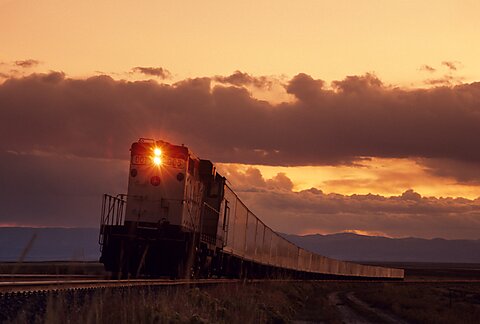
David Kemp and Peter Van Doren
One year ago, a freight train derailed in East Palestine, Ohio causing a leak of hazardous chemicals and a large fire. Despite a strong public backlash and apparent political support, a bipartisan bill to institute new safety requirements on trains carrying hazardous materials has not become law.
A recent New York Times article suggests that rail accidents went up because the bill did not pass:
After a freight train carrying hazardous chemicals derailed a year ago in East Palestine, Ohio, forcing the evacuation of hundreds of residents and upending life in the town for months, the rail industry pledged to work to become safer, and members of Congress vowed to pass legislation to prevent similar disasters.
No bill was passed. And accidents went up.
Derailments rose at the top five freight railroads in 2023, according to regulatory reports for the first 10 months of the year, the most recent period for which data exists for all five companies.
Factually, the article is correct. Data from the Federal Rail Administration (FRA) does show that, in the first 11 months of 2023, there was a slight uptick in accidents. But when viewed over a longer time horizon, last year’s data seem less worrisome.
Total accidents and derailments at the five largest (known as Class I) railroads increased between 2022 and 2023. (Our numbers differ slightly from those reported by the Times because the FRA just released data for November 2023 and because we do not know exactly which parameters the Times used to filter the data. In the following figures we look at accidents in the first 11 months of the year on main line tracks for five Class I railroads: BNSF Railway, Union Pacific [UP], CSX Transportation, Norfolk Southern Railway (NS), and Grand Trunk Corporation [GTW, the U.S. subsidiary of Canadian National Railway].)
Figures 1 and 2 illustrate the increase in the context of the overall improvement in safety since the Class I railroads consolidated roughly two decades ago. Measured both by total accidents and by derailments, railroad safety has improved dramatically.
And the five railroads, individually, have experienced similar trends, as shown in figures 3 and 4. Total accidents have fallen by nearly half and derailments by about 60 percent since 2000.
However, from 2022 to 2023, both accidents and derailments have slightly increased. How does this annual change compare to changes in previous years? Figures 5 and 6 show the year‐to‐year percentage change in total accidents and derailments since 2000.
Both charts show that the data fluctuate, and that the trend of the data is not different from zero statistically. Between 2018 and 2019, derailments increased by 15 percent. And between 2019 and 2020, they decreased by 19 percent. Using one year’s change to predict the next year’s change would yield incorrect predictions.
Accidents caused by overheated bearings, which led to the East Palestine derailment, more than doubled from 2022 to 2023. Figure 7 shows that the number of accidents caused by overheated bearings also fluctuates since 2000, though in this case the data vary around a trend that is statistically significant and declining.
What if we assessed railroad safety using the number of railcars in accidents that released hazardous materials? Ironically, Figure 8 shows that even with the eight cars that released hazardous chemicals in East Palestine, the railroads improved between 2022 and 2023. But even though last year’s change exhibits an improvement that railroads might cite in their defense, such a claim would be misleading because the long‐term trend is not different statistically from zero.
The Times article includes a few brief acknowledgments of the real issues involved in the discussion of rail safety after East Palestine. First, it mentions rail lobbyists’ argument that the proposed rail safety bill’s requirement that the railroads install detectors to monitor for overheated bearings “would inhibit the ability of railroads to introduce new practices and technologies to reduce accidents.” Any measures to try to improve rail safety should pass a cost‐benefit test, and prescribing specific measures potentially forces railroads to forgo more effective, less costly innovations.
Second, the Times notes that rail is much safer than the primary alternative, trucking, for transporting hazardous materials.
And third, it notes that CSX “reported an accident rate — which measures accidents as a percentage of the distances traveled by trains — that was slightly lower in 2023 than in 2022.” The article also mentions that “Its total accidents still rose.”
But “total accidents” means very little without accounting for the volume of freight railroads are transporting. A railroad that experiences a doubling of its absolute number of accidents while sending out ten times as many trains has had an improvement in its safety record, irrespective of the increase in total accidents.
Despite what the Times article and other reporting suggest, as we showed in our blog last year freight rail has seen a remarkable improvement in safety since the 1970s. In fact, looking at all railroads and types of track and considering accident rates per billion‐ton‐miles of freight, figures 9 and 10 (reprinted from that blog with slightly updated numbers) show that the number of freight cars that derailed and the number of cars in derailments that leaked hazardous materials both improved by an order of magnitude from 1980 to 2020.[1]
The rail accident data from last year do not lead us to conclude that the safety progress over the past four decades is reversing.
[1] These figures use FRA’s data on accidents from all railroads, not just the Class I railroads. The Bureau of Transportation Statistics data are in the ton‐miles of freight for only the Class I railroads. Class I railroads are estimated to account for about 70 percent of total rail ton‐miles of freight. Thus, the estimates likely overstate the actual rate of derailments per ton‐mile.








